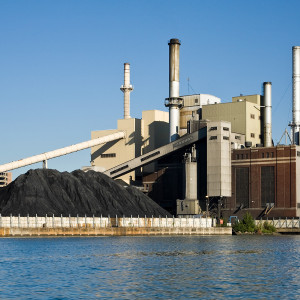President Trump instructed the Environmental Protection Agency to rescind its Clean Power Plan … and a thousand doomsday predictions were born.
Headlines warned that the executive order will “broadly endanger Americans’ health and welfare.” Indeed, we were told, Trump “may have signed Earth’s death warrant” — and all to save a handful of coal mining jobs.
There’s a lot more to the story, of course. Beginning with the fact that the Clean Power Plan is badly misnamed. Over the last few decades. America’s power plants have become remarkably clean. Companies have significantly reduced the pollutants known to harm human health and the environment.
But the Clean Power Plan had nothing to do with reducing pollutants. Its goal was to reduce carbon dioxide — a colorless, odorless nontoxic gas. No one will need to go out and buy an air pollution mask because the Clean Power Plan has been canned.
Will failure to implement plan result in climate catastrophe? Only if you define “catastrophe” as a temperature increase of two hundredths of a degree Celsius over the next 85 years. According to climatologists, that’s the total amount of global warming the Clean Power Plan would avert, if it were implemented perfectly. And that’s why even climate warrior James Hansen called the Clean Power Plan “practically worthless.”
How about the argument that climate change is a global problem, requiring U.S. leadership — like hewing to international climate agreements such as the Paris Protocol? Well, the Massachusetts Institute of Technology’s Joint Program on the Science and Policy of Global Change projects that if all the countries meet the carbon-dioxide reductions outlined in the Paris protocol (a big if), it will avert a meager 0.2 degrees Celsius warming by the year 2100.
No matter where you stand on the climate science spectrum, carbon-dioxide mitigation policies are terribly ineffective.
They do, however carry a very hefty price tag — and not just for mining communities. Affordable, dependable energy is a key ingredient of economic growth. Driving up energy costs to reduce carbon-dioxide emissions leaves families paying more — not just for the electricity bill but also at the grocery store, the department store and practically everywhere else. That’s because the businesses that produce most everything we use will pass their higher energy costs on to consumers.
Heritage Foundation analysts used a derivative of the federal government’s National Energy Modeling System to estimate just how much the Clean Power Plan would cost Americans by 2035. The tally was frightening:
—An overall average annual shortfall of nearly 400,000 jobs — more than half of them in manufacturing.
—Increases of 13 percent to 20 percent in household electricity expenditures.
—A total income loss of more than $20,000 for a typical family of four.
—An aggregate loss of over $2.5 trillion in gross domestic product.
One curious objection to Trump’s executive order was that “it’s too late to resuscitate the coal industry.” Cheap natural gas, declining renewable prices and mechanized coal equipment will keep coal miners in the unemployment line. If such is the case, then the activists screaming bloody murder over the order should have nothing to worry about it.
We’ve heard bold predictions about energy before, whether it was that the price of oil would never fall below $100 per barrel again or that fusion technology is right around the corner. Those turned out to be false. With nearly five centuries worth of coal supplies beneath American soil, the resource could very well be a part of America and the world’s energy mix well into the future. Unwinding these regulations gives coal a fighting chance.
Nevertheless, coal’s future isn’t for politicians, pundits or regulators to determine. Coal’s role as a power source is for the market to decide. But Trump’s order will prevent some of the economic bleeding occasioned by his predecessor’s misguided energy policy.
Washington should not prop up one energy source over another with taxpayer-funded handouts, nor should environmental bureaucrats regulate an energy source out of existence when those regulations provide absolutely no meaningful environmental benefits.
Whether it was through obstructing coal leases on federal lands, denying permits for Keystone XL, or canceling offshore drilling leases, President Obama ignored sound science and technical analysis. Instead, he catered to the “keep-it-in-the-ground” activists. Those decisions have serious economic consequences for the people who live above it.
Trump’s executive order should be the first of many steps the new administration and Congress take to unwind, not just years, but decades of bad energy policy.

